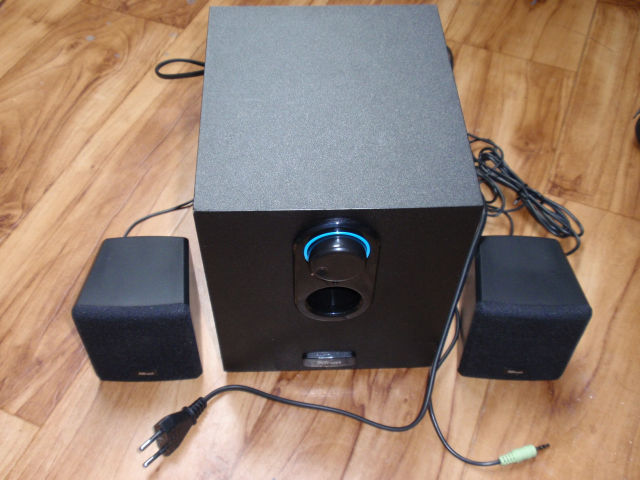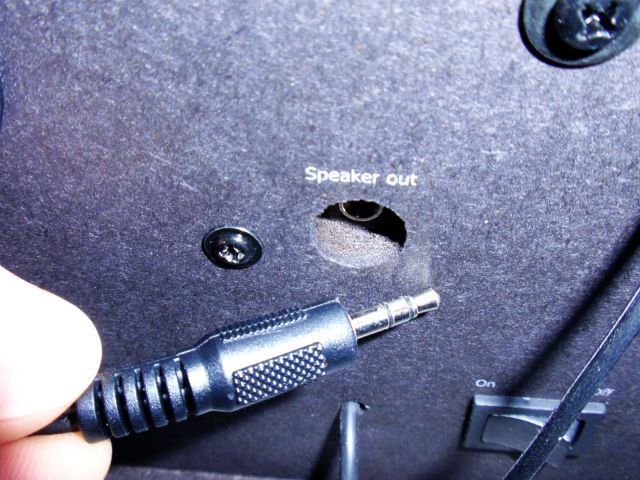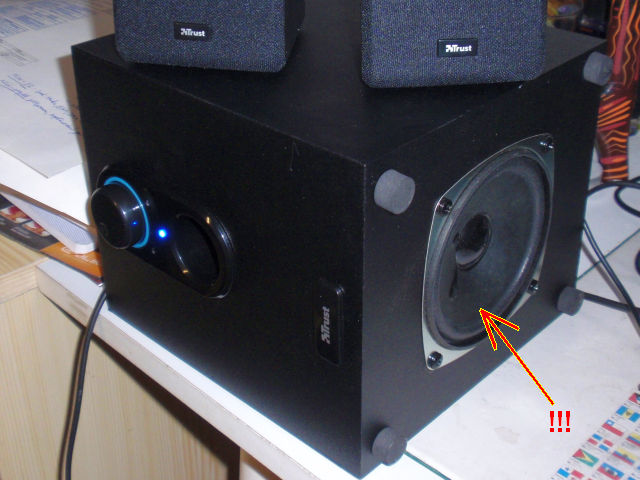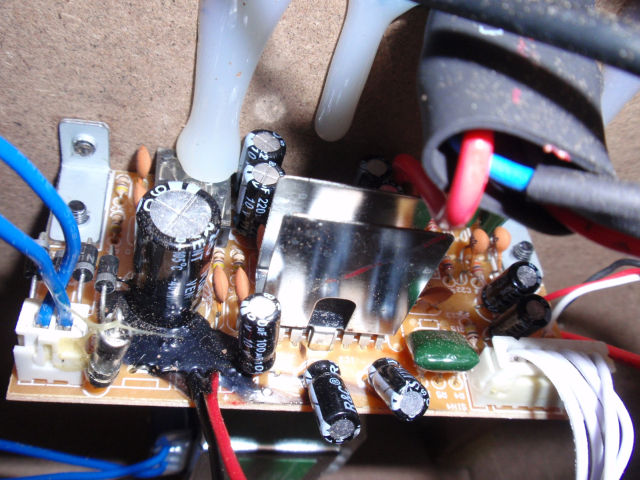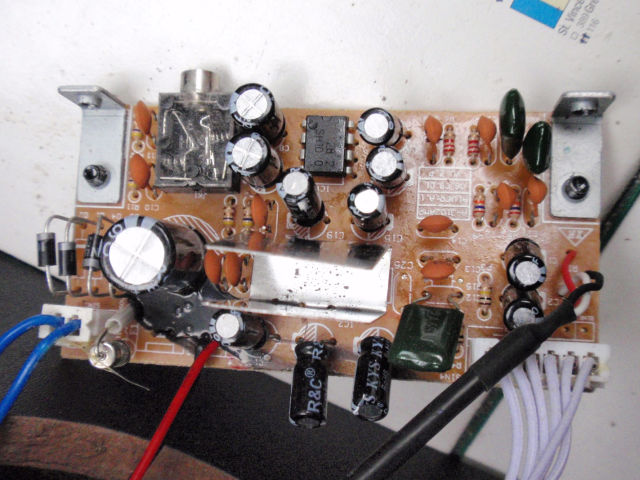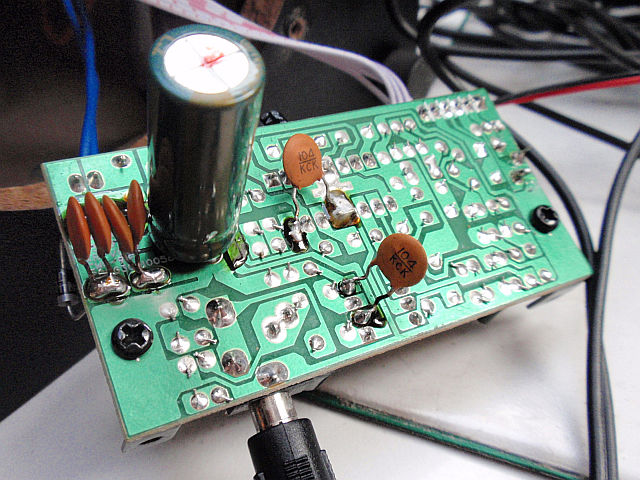Recently, I became the lucky owner of a 2+1 speaker system, model SP-3150 by Trust. A proverb says "don't look into a gifted horse's mouth" but I did not follow it this time. The stated total power is 15 W RMS and 30 W peak. The power of individual speakers is not given. At first glance, multiple things caught my attention about the speaker system. When I flipped the subwoofer on its side, I was struck dumb. The driver is built into the bottom side and not covered in any way, the speaker's bare paper membrane is showing (!). Satellite speakers are connected with a jack connector, so the amplifiers must be shorted when inserting their plug. The speakers give out a noticeable hum and hiss. Both of these noises are independent from the input and the volume knob position. The blue LED dims and flickers at higher volume. I used a multimeter on the mains plug to find the resistance of the transformer's primary and I got 500 Ω. The empirical formula P=2000/R suggests that the transformer's power is 4 W. The back side states input voltage of 230 V 0.3 A (!). Such current seems excessive even if it really drew 15 W. I could not resist the temptation and took a peek inside. I was first surprised by the subwoofer marked 3W 8Ω (only 3 watts!!!). Then I noticed the transformer's marking 8V 0.75A, which means 6 W. The satellite speakers are 2W 4Ω. The main filtering electrolytic capacitor is just 2200μF 16V. The amplifier for both satellites is TDA2822M, a stereo amplifier IC in a DIP8 (!!!) package with no cooling. Its thermal resistance is 100 K/W to ambient air and 70 K/W to pins. The max stated power into 4 Ω is 650 mW per channel. A DIP16 bridge amplifier, likely TDA2822, is hidden under a tiny heatsink of two thin 2×2cm iron plates, cooling the pins 4, 5, 12 and 13. The max output power of the bridge into 8 Ω is 3.2 W. Here, the power is likely being limited by the speaker's 3W rating. The total power could then be at most 3 + 2×0.65 = 4.3 W. The other limiting factor besides the speakers and amplifier is the transformer rated 6 W. If a linear amplifier works ideally, it would have a 70% efficiency and the max output power could be 4.2 W without overloading the transformer. A real low-voltage amp could reach a 3W output from a 6W supply, including rectifier losses. The stated 15 W is therefore very far from the truth and is only there to deceive the naive and ignorant consumer :) (and 230 V 0.3 A is there to deceive a slightly more knowledgeable consumer). It's all about stating a higher number than the competition. The real power gets multiplied by some constant, which rises from year to year. Not only does this happen with the PMPO (which would be around 500 W for these speakers) but also the RMS power. Also, it needs to have a blue LED, no piece of consumer electronics can be without one nowadays :). I was also surprised that no ceramic capacitors of around 100 nF are present in parallel to the rectifying diodes or the power of the amplifiers to reduce noise and filter high-frequency currents. There is just a single 2200μF e-cap with a significant ESR and ESL. It is also connected to the ICs with long squiggly traces. So I added a 3300μF e-cap in parallel (for a total of 5500 μF and placed six 100nF caps where they belonged. Increasing the capacity of the filtering e-cap will reduce the hum and hiss, the ceramic caps right at the amps' pins will lower the distortion and risk of jitter in peaks (sizzling sounds). The lesson is: Don't look into a gifted horses mouth, give it a denture right away :).


